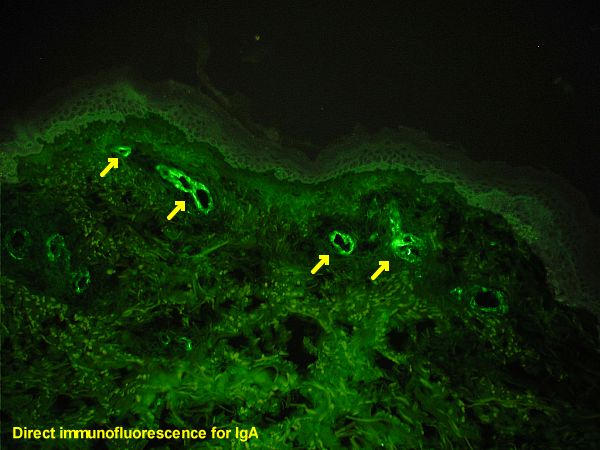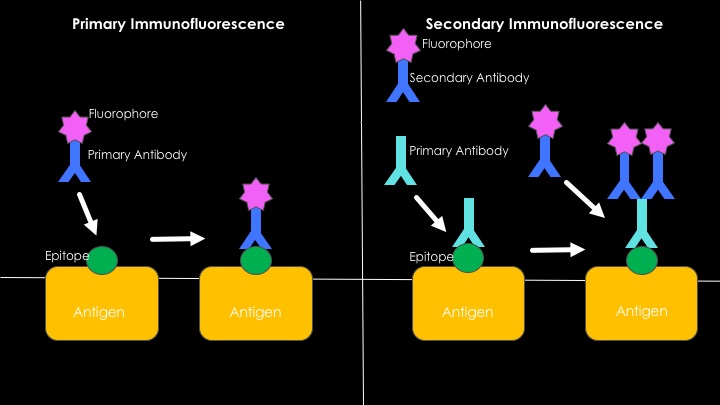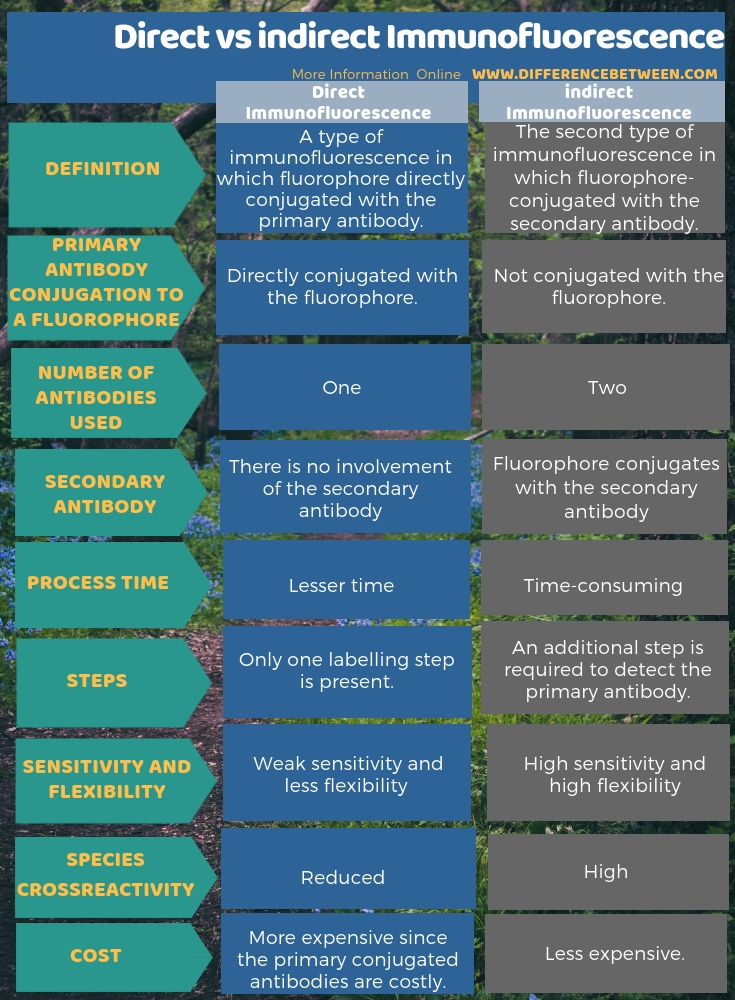Difference Between Direct and Indirect Immunofluorescence
The key difference between direct and indirect immunofluorescence is that the direct immunofluorescence uses a single antibody that works against the target of interest while the indirect immunofluorescence uses two antibodies to label the target of interest.
Immunofluorescence or cell imaging is a technique that is used to label a specific target antigen with a fluorophore. Here, the fluorophore is a fluorescent chemical compound that can re-emit light upon light excitation. When a fluorophore binds with the target antigen, it allows the detection of the target molecule in the sample. To describe it further, when an antigen binds with a specific antibody, it can be conjugated with fluorophores. Hence, it is easy to detect the presence of the target antigen in the sample when observing under the fluorescence microscope.
Besides, there are two types of immunofluorescence; direct and indirect immunofluorescence. The difference between direct and indirect immunofluorescence mainly lies in the number of antibodies used and the fluorophore conjugation. That is, in direct immunofluorescence, the fluorophore directly conjugate to the primary antibody while in indirect immunofluorescence, the fluorophore conjugate with the secondary antibody.
CONTENTS
1. Overview and Key Difference
2. What is Direct Immunofluorescence
3. What is Indirect Immunofluorescence
4. Similarities Between Direct and Indirect Immunofluorescence
5. Side by Side Comparison – Direct vs Indirect Immunofluorescence in Tabular Form
6. Summary
What is Direct Immunofluorescence?
Immunofluorescence uses antibodies to detect specific target antigens. Direct immunofluorescence is one of the two types of immunofluorescence. In direct immunofluorescence, a single antibody (primary antibody) involves and the fluorophore directly conjugates with the primary antibody. Upon binding the antibody with the target antigen, fluorophore emits fluorescence which can be detected by a fluorescence microscope.

Figure 01: Direct Immunofluorescence
However, direct immunofluorescence is an expensive method since the primary conjugated antibodies are costly compared to the secondary antibodies. Nevertheless, it does not involve an additional step hence, a shorter technique. Furthermore, non-specific bindings are reduced in direct immunofluorescence. Hence, species cross-reactivity is low. But in detection, the sensitivity of the direct immunofluorescence is weak in comparison to the indirect immunofluorescence .
What is Indirect Immunofluorescence?
Indirect immunofluorescence is the second type of the immunofluorescence that involves two types of antibodies such as primary and secondary antibodies in the labelling of the target antigen. In this method, the fluorophore conjugates with the secondary antibody. Hence, this technique involves an additional step.

Figure 02: Immunofluorescence
However, the sensitivity is high in this method since several fluorophores can be conjugated to secondary antibodies and it makes the detection easier. Furthermore, indirect immunofluorescence is less expensive due to the fact that the conjugation of secondary antibodies is less expensive and easier. In comparison to the direct immunofluorescence, species cross-reactivity is high in the indirect method.
What are the Similarities Between Direct and Indirect Immunofluorescence?
- They are two types of immunofluorescence technique.
- Primary antibodies and fluorophore involve in both methods.
- Also, the antigen-antibody reaction occurs in both methods.
- Furthermore, both direct and indirect immunofluorescence utilize a fluorescence microscope for the detection of antigen.
What is the Difference Between Direct and Indirect Immunofluorescence?
Immunofluorescence can be direct or indirect based upon the fluorophore conjugation with the antibodies used. In direct immunofluorescence, the fluorophore conjugates with the primary antibody, which is the single antibody that involves in this technique. In contrast to that, in indirect immunofluorescence, the fluorophore conjugates with the secondary antibody, which is one of the two types of antibodies that involve in the technique. Hence, the main difference between direct and indirect immunofluorescence is the antibody type that conjugates with the fluorophore.
The following infographic provides a side by side comparison of the difference between direct and indirect immunofluorescence.

Summary – Direct vs Indirect Immunofluorescence
Immunofluorescence is a technique that is used to detect the presence of specific antigens in a sample. This technique uses specific antibodies. Therefore, in this, the antibodies conjugate with fluorophores to detect them using a fluorescent microscope. Moreover, there are two types of immunofluorescence namely, direct and indirect immunofluorescence. Direct immunofluorescence involves a single antibody and fluorophore directly conjugated to this antibody. Indirect immunofluorescence involves two antibodies; primary and secondary and fluorophore conjugated to the secondary antibody. Since several secondary antibodies can bind with a primary antibody and several fluorophores can conjugate with secondary antibodies, indirect immunofluorescence is a more sensitive method than the direct method. Furthermore, the indirect method is less expensive than the direct method. Thus, this is the difference between direct and indirect immunofluorescence.
Reference:
1.“Immunofluorescence.” Wikipedia, Wikimedia Foundation, 19 Aug. 2018. Available here
Image Courtesy:
1.”HSP IF IgA”By Emmanuelm at en.wikipedia, (CC BY 3.0) via Commons Wikimedia
2.”Immunofluorescence”By Westhayl618 – Own work, (CC BY-SA 4.0) via Commons Wikimedia
ncG1vNJzZmivp6x7pbXFn5yrnZ6YsqOx07CcnqZemLyue8OinZ%2Bdopq7pLGMm5ytr5Wau26wyKucnKxdlrulecinm6KqlZjBbrXMpqynp5ahwrC%2BxKyanqaTmnw%3D